Culture Watch

IN A SMALL VENUE, I watched Mitski perch on a white chair behind a white table, fold her hands, and start to sing emotional ballads.
The 29-year-old musician was performing in Carrboro, N.C., from her fifth studio album, Be the Cowboy. It’s one of my favorites from 2018 and plays with the American cowboy mythology in its loneliness (“My God, I’m so lonely ... still nobody wants me,”) and longing (“I just can’t be without you”).
I expected a typical concert, hearing favorite songs and seeing Mitski’s personality. But I was jarred by the lack of emotion she showed. The entire time she sang, her face was resolute and hardened, a seeming contradiction with her heartrending lyrics.
Second, she danced sensually, even while her face remained impassive. She wore nothing “sexy”—a white T-shirt, biker shorts, and kneepads—as she executed carefully choreographed sequences. But she leaned forward, slanted her hips, and flicked her hair. She climbed onto the table and spread her legs toward the audience. Yet she never broke a smile, never performed the emotion of eroticism.
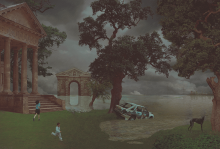
At higher educational arts institutions, green has become the new black. In the last year, museums at Bowdoin College, Brown University, Princeton University, University of Colorado Boulder, University of Maryland, University of Michigan, University of Utah, and Yale University have convened environmental and climate change-focused programming and exhibitions, with titles ranging from “Sea of Troubles: Rising Seas & Sinking Cities” to “Before the Deluge: Apocalyptic Floodscapes from John Martin to John Goto, 1789 to Now.”
The focus on nature and the dangers facing the environment raises the question: Are there unique opportunities and challenges for college and university art museums when addressing the environment? And more fundamentally: Can an art exhibit do more than simply preach—albeit beautifully—to the choir?
First and foremost, the humanities offer “effective, compelling storytelling,” according to Jeffrey J. Cohen, dean of humanities at Arizona State University, co-president of the Association for the Study of Literature and the Environment, and a teacher of environmental humanities.

In his seminal work Mythologies, French philosopher and critical theorist Roland Barthes announces that “Myth is a type of speech.” And not simply any type of speech, but a dangerous kind. Myth is problematic, he says, because it allows a fictional brand of naturalism to subsume history. It creates a false narrative that the way things are is the way things are meant to be, leaving ample room for injustice to flourish.
Recently, the playwright Jeremy O. Harris tackled one particular section of American mythos: education. And, in typical Jeremy O. Harris fashion, his exploration is complicated.
I went to see Harris’ fantastical play “Yell: A ‘Documentary’ of My Time Here” in a state of fear and excitement, wondering what dirty laundry he would air about my then-future intellectual home.

APPROPRIATELY ENOUGH, The Saint of Lost Causes —the new Justin Townes Earle album—has an Orthodox icon of St. Jude on the cover. In Catholic lore, St. Jude is the patron saint of lost causes and desperate cases. But if a person can still turn to a saint for intercession, the cause isn’t entirely lost. The desperate act of prayer implies at least a sliver of hope for grace and mercy, and that’s mostly where the people in Earle’s new batch of songs are: down to their last desperate prayer but still hoping.
At the beginning of the album, in the title track, Earle lays it out, singing: “Now it’s a cruel world / But it ain’t hard to understand / You got your sheep, got your shepherds / Got your wolves amongst men.” Over the course of the next 11 songs, we see the world mostly from the point of view of the sheep. We hear from some fracked-out citizens in “Don’t Drink the Water” who are growing increasingly restless as some oil company hack keeps claiming that their poisoned land and water, and the occasional earthquake, are all an “act of God.” Later, in “Flint City Shake It,” a streetwise Michigander fills us in on how General Motors assassinated his still-resilient hometown. Then there’s the junkie desperado of “Appalachian Nightmare” who hopes God can forgive him at the moment of his death.

WHEN I TRAVEL to a city, I find art museums and their masterpieces: “Sunflowers” in Amsterdam, the “Prodigal Son” in St. Petersburg, “David” in Florence. Van Gogh, Rembrandt, Michelangelo. These are masters, according to some cultural imagination.
But it wasn’t until this past April that I encountered an Asian master and masterpiece: Katsushika Hokusai’s “Under the Wave Off Kanagawa.” The print is better known as “The Great Wave”—you know, the Apple wave emoji. Why is this the first Asian masterpiece that I’ve seen?
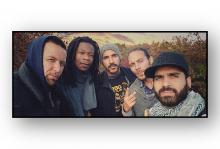
BEFORE THEY ARE hip-hop performers, educators, and poets, the Peace Poets are a family. “It’s been a development of a brotherhood,” Frank Antonio López (aka Frankie 4) says of the group’s formation. López and Abraham Velazquez Jr. (aka A-B-E) met when they were 3 years old. Enmanuel Candelario (aka The Last Emcee) was introduced to the pair in grade school and introduced to Frantz Jerome (aka Ram 3) in high school. Candelario would go on to meet Luke Nephew (aka Lu Aya) at Fordham University in New York.
Much of the Peace Poets’ foundational development occurred in Harlem at Brotherhood/Sister Sol, a leadership and educational organization for black and Latinx youth. It was there, López says, that the Peace Poets were “politicized through art.”
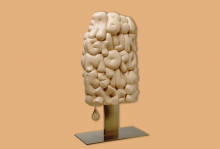
“ARTISTS EXPRESS things that people don’t have words for; that’s why it’s so important to have them in justice spaces.”
With that neat answer, the panelist sits back in her chair, satisfied, bedazzled nails glimmering in the stage lights. I roll my eyes, then immediately feel guilty. You know you’re in for a rough night when you find yourself side-eyeing a Tony Award-winning actress—at a Martin Luther King Jr. Day event, no less—but I can’t help myself. Her answer smacks of the vague, self-congratulatory art-speak I hear on a regular basis, in which people tell me their work is a “metaphor for capitalism,” without any kind of explanation.
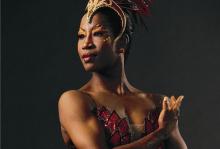
BLACK BALLERINAS have long perfected the art of altering pink tights and ballet shoes to match their skin tones. The night before a class with company members of the Dance Theatre of Harlem, the first black classical ballet company, pots of water with multiple tea bags boiled on the stove in my home, so I could dye my legwear and footwear. It was a process my mother swore by—and it worked.
In November 2018, nearly 200 years after pink ballet shoes were designed for white dancers, the company Freed of London released pointe shoes in colors that match Asian and black skin tones. It’s a step in the right direction, even though the ballet world continues to be characterized by whiteness.

TO UNDERSTAND THE TRUMP PHENOMENON, which is at least in large part about race, I decided to read. Instead of reading more white people wrestling with what has gone wrong with white people, I, a white man, focused on African-American sources, mainly novels.
This move was first suggested to me by womanist ethicist Katie Cannon, who read the novelist Zora Neale Hurston as a primary source. I, too, began with Hurston, and then couldn’t stop. For two years, I have been reading classic novels by African-American authors, seeking an answer to these questions: How do black characters experience white people? How do they describe white Christian people’s morality and religion? The answers are clear—and devastating.
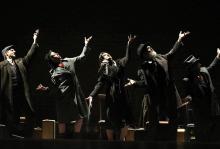
PAULA VOGEL WON the 1998 Pulitzer Prize for drama for “How I Learned to Drive” and is a veteran playwright of the American stage. But it wasn’t until 2017 that she finally made her way to Broadway with another of her prize-winning plays: the Tony Award-nominated “Indecent.”
“I wrote it as a love letter to the theater in 2015,” said Vogel, “and I never knew then how the play would resonate as strongly as it does today in these Trumped-up political times.”
“Indecent” tells the story of the theater troupe that performed Sholem Asch’s ill-fated Yiddish play “The God of Vengeance.” Premiering in 1922, “Vengeance” was the first play on Broadway to depict a lesbian love scene, causing a wave of notoriety everywhere it was performed. Asch’s play originated in Poland and tells the story of a Jewish brothel owner’s daughter who falls in love with one of his prostitutes. The father, on discovering his daughter’s forbidden love, throws the Torah down on the stage and banishes his daughter to a life of prostitution.
Asch’s leading actor in Poland warned him not to produce the play, but the play went on a whirlwind tour of success across Europe, finally arriving to New York City’s Greenwich Village in 1922. Despite this, when the show opened on Broadway, it was severely censored. “Why did you agree to those cuts?” the stage manager, Lemml, asks Asch in “Indecent.” “You cut the love between those two girls. There’s only sex left!”

AS AN OUTSIDER, Virginia Woolf eschewed labels that attempted to relegate her to tidy boxes. The label “feminist” should die, the British novelist wrote in Three Guineas, an essay published in 1938 that married equal opportunities and pay for women with how a society might prevent fascism and war.
Likewise, despite her disdain for war, she would not claim herself a “pacifist.” The only label she allowed for herself was “outsider,” and perhaps because of that, many of her novels are concerned with outsiders. But it wasn’t just outsider status that fascinated her: It was the way patriarchal structures punished outsiders for failing to conform to and live within their confines, most notably those associated with war.
Woolf’s intellectual and social concerns form the subtext of many of her novels. While Woolf’s 1925 novel Mrs. Dalloway has not traditionally been labeled an anti-war novel, it reveals a rich theology of hospitality, an antidote to war and the moral injury that results from the ways that war wastes human life. Outsiders hold the key to this theology in the way they form their peculiar values despite the patriarchal structure’s insistence that they are frivolous, cowardly, or only after personal gain.

IN ITS MOST BASIC FORM, theater is about transformation: altering voices, mannerisms, appearances, and scenery until what was becomes unrecognizable. Theater is also about resurrection: an empty stage brought to life, an untold story come alive. And no theater better embodies resurrection than Mosaic Theater.
In fall 2014, the Edlavitch Jewish Community Center (JCC) of Washington, D.C., forced its theater company, Theater J, to cancel the critically acclaimed Voices of the Changing Middle East Festival due to pressure from JCC donors upset with the festival’s controversial nature. Ari Roth, Theater J’s artistic director, protested the end of the festival’s groundbreaking interfaith dialogue and was subsequently fired. Afterward, he established Mosaic Theater, of which he is the founding artistic director.
“In a way, it was a very dramatic, abrupt, and even violent birth,” Roth told Sojourners. “It involved collateral damage, harsh words, a firing, accusations of censorship, a divorce. There was a rupture.”
Mosaic Theater was born from broken relationship—yet today it stands as a testament to inclusion, reconciliation, and renewal. Located on H Street in D.C.’s Northeast quadrant, Mosaic is a thriving fusion community committed to producing high-quality, socially relevant art in an uncensored environment. It is now in the middle of its fourth season, titled “How Hope Happens.”
“Moving to Mosaic meant we would lose Judaism but keep the prophetic piece. It would be multifaith, a mosaic of faiths united by common values. And the top value was a belief in the power of art to transform and transport people and communities to new places,” said Roth.
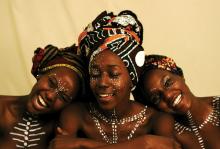
IN THE SPAN OF OUR HOUR-LONG conversation, Mimi Mutesa, an emerging Ugandan-American photographer-videographer and an undergraduate student at Calvin College, a Christian Reformed school in Michigan, easily gives her thoughts on everything from the complexities of blackness to the policing of women’s bodies. However, when I ask her how her faith influences her work, there is a brief pause on the other end of the line.
“I don’t think it’s ever crossed my mind until this moment,” she says. When pressed, she explains that she’s “trying to tackle enough issues” in her art as it is, and evangelical culture has “far too many other problems” for her to address. Mutesa assures me that she still identifies as a person of faith but maintains that her relationship with God is “separate” from her relationship to art and social justice.
Perhaps this separation is a necessary one. It’s hard to imagine the average evangelical church embracing Mutesa’s colorful portraits of nude black joy. Her sentiments echo an unspoken opinion held by many young Christians, that if you want to be radical like Jesus was, you must do so on the margins of Christianity. More traditional folks may see this rush to the margins as a slick avoidance of the Christian call to profess one’s faith, or a symptom of postmodern discomfort with absolute truth. But what is more likely is that millennials of faith, especially millennials of color, want to engage with values traditionally cherished by the church but see modern-day Christianity as a direct hindrance to that sort of exploration, since significant portions of the church have been antagonists in struggles for social equality.
Reticence to conflate personal faith with artistic vision is deeply connected to a complex historical dialectic between the arts and the church: Mutesa’s midconversational pause is supported by precedent.

IN OCTOBER, The New York Times published an article that, despite its dire implications, seemed to wash away in the rapid news cycle. It described how, according to the U.N.’s Intergovernmental Panel on Climate Change, the world’s population will see major consequences, as early as 2040, from its mistreatment of the planet. More droughts, more wildfires, more poverty, and higher temperatures—in only 22 years. When that time comes, when nature begins to resemble Hell, how will we have to live?
Emmy-nominated documentary filmmaker David Conover has been thinking about this question for 12 years. “I was a parent of two young kids,” Conover told me about the moment when he began to ruminate on creation care, “and was trying to understand the world they were growing into: pollution, severe weather with fires, flooding, droughts, struggles with realities that weren’t that apparent even a generation ago.
“There have been many films made about those things, how we know that they’re happening, what’s causing them, and so on. But there haven’t been any films about people and their experience of exploring the very tough question of how to live right today in this climate.”
Conover’s wrestling with how to live a moral life during a time of environmental hardship has culminated in the production and release of his newest documentary, Behold the Earth, which explores contemporary Christianity’s relationship with creation care.

I MET KATHY KHANG last summer. She joked about turning to Korean face masks and wine in her times of need; I immediately thought to myself that we’d really get along. Fortunately, her expertise in crafting both engaging conversation and knockout tweets (@mskathykhang) translates well into her latest book, Raise Your Voice: Why We Stay Silent and How to Speak Up.
Khang, who emigrated from Korea to the U.S. as a child, has worked in various settings, including newsrooms and university campus ministries. She brings her journalism and ministry experience to activism, recognizing that social justice always involves multiple intersections of race, gender, orientation, faith, politics, and more.
Raise Your Voice is an authentic diagnosis of, and antidote to, the deafening silence from many women and minorities in the workplace, politics, the world, and, most potently, in our spiritual and worship spaces. Khang crosses social, cultural, professional, and generational boundaries to create a tool useful to anyone who has ever felt either like they didn’t have a voice, or that their voice was taken from them.
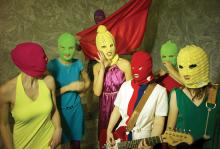
"WE ARE WHAT WE PRETEND TO BE,” Kurt Vonnegut once observed. “So we must be careful about what we pretend to be.” What a funny and paradoxical and intensely true thing to say. This is indeed the drill. The world runs on pretense. We play along with norms, strengthening their power as we go, borrowing a sense of legitimacy—sometimes trading in acts of legitimation with others—in the hope of being seen by others as credible and worthy of a salaried position.
If we aren’t careful, we learn to stop asking whether the reigning legitimacies in which we live and move are, in fact, good or worthy or true. When they aren’t, our pretense is a form of earnest wickedness. I’ve gained power, a tiny world of fake legitimacy, while slowly and dutifully forfeiting my soul. I’ve become what I’ve played at and lost any righteous sense of self and others in exchange for status. Henry David Thoreau described the way his own conscience sometimes succumbed to such peer pressure thusly: “The greater part of what my neighbors call good I believe in my soul to be bad, and if I repent of anything, it is very likely to be my good behavior. What demon possessed me that I behaved so well?”
We are, of course, responsible for our own words and actions, but we’re also responsible for the conflicts we avoid to more effectively get by, the lies we allow others to propagate unchallenged in our presence. Thoreau worried over all the ways he played along and didn’t raise a fuss in the face of the terrors his government enacted and the subtle fashion in which his own behavior, by proving polite and acceptable, abided injustice.
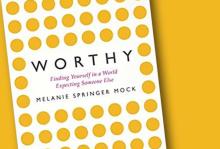
WHEN MELANIE MOCK, author of the new book Worthy: Finding Yourself in a World Expecting Someone Else, realized as a teen that her newly acquired designer jeans would not lead her to immediate popularity, she bumped into questions I’m sure many of us face: Where does our worth come from? How do we get to the point where we truly believe we are worthy and beloved just as we are, as the children of God? Through sometimes humorous, sometimes heartrending, and always poignantly honest stories from her own experience, Mock opens the vulnerable space within to attend to the stories we tell ourselves about our value.
Mock’s stories point out the hidden messages about worthiness given to us by American culture, in particular the evangelical subculture, contrasting the messages of the “purity culture” with the biblical promises of our innate belovedness. She builds on the groundwork laid in If Eve Only Knew: Freeing Yourself from Biblical Womanhood and Becoming All God Meant for You to Be (Chalice Press), which she co-wrote with Kendra Weddle Irons.
While she focuses primarily on the messages given to white evangelical women, since this is her experience, she recognizes her privilege, as well as the parallels between the unhealthy and often impossible implicit standards American evangelicals hold for women, people of color, and LGBTQ+ folks, all who do not meet a white male “norm.” Mock addresses how evangelical cultures tend to create double standards for women, requiring a type of “purity” that has nothing to do with Christianity. She shares honestly about the fear that even when she seems to be fitting the mold of the ideal Christian woman, at any moment the façade of the successful mother/wife/professor will be unmasked.
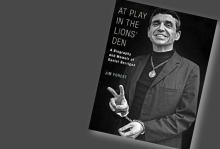
WHEN DANIEL and Philip Berrigan, A.J. Muste, John Howard Yoder, and a handful of Catholic radicals gathered in 1964 with Thomas Merton at the Abbey of Gethsemani in Kentucky for a retreat concerning the spiritual roots of protest, the intercessions of that meeting, I am convinced, not only seeded a movement but summoned my vocation.
Four years later when Daniel and Phil Berrigan and seven others entered the draft board in Catonsville, Md., removed 1A files and burned them with homemade napalm, those ashes too would eventually anoint my pastoral calling. October marks the 50th anniversary of the trial of the Catonsville Nine. Released in February 1973 after 18 months in the federal penitentiary at Danbury, Conn., Daniel Berrigan came to New York and taught the Apocalypse of John when I was a student at Union Seminary. Full disclosure: He became to me not merely teacher, but mentor and friend.
In the year following Dan’s death (April 30, 2016), Jim Forest undertook the heroic literary effort of writing At Play in the Lions’ Den. Perhaps he had a running start. Three things of note up front. One is that Forest’s own life is inextricably tangled with Berrigan’s. He was, for example, editor of The Catholic Worker when Dan first appeared there, was part of the 1964 retreat with Merton, and responded to Catonsville by joining others in a draft board raid in Milwaukee within the year. So, like the Acts of the Apostles, there are whole sections of this book written in the first-person voice. Or betimes, Forest just peeks from behind the elegantly researched narrative to lend a knowing detail. This is a risky wire act. Don’t fall into self-aggrandizement (his genuine modesty saves him that) or the net of hagiography. And best to name this from the start, in the subtitle: “biography” and “memoir,” a difficult art Forest has mastered.
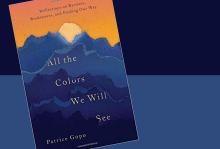
EQUAL PARTS brilliant imagery and candid reflection, All the Colors We Will See is a story on becoming. With vivid attention to detail and a deep reservoir of wisdom, Patrice Gopo has carefully crafted a collection of essays on love, loss, and longing.
This story begins in the 1980s, weaving together layers of identity formation as we learn Gopo’s background as the daughter of Jamaican immigrants and explore her adolescent upbringing in Anchorage, Alaska. Throughout this book Gopo intimately relays her difficulties as a constant minority—African American with some East Indian heritage—often lacking cultural peers in her evolving spaces. From witnessing the acquittal of O.J. Simpson at her predominantly white high school to finding black community at Carnegie Mellon University to meeting the love of her life in Cape Town, South Africa, we are taken on a journey of self-discovery and self-acceptance.
This book is not merely reflection. It is a deeper introduction to the complex intersection of race and immigration and how these can inform one’s developing sense of self. Time and time again, Patrice Gopo lives into an identity as an “other,” struggling to find her fit.
“‘I don’t really think of you as being black,’ a dear college friend once said to me,” Gopo writes. “I held the phone against my ear and paused a moment as mild indignation crept through my mind. ‘Of course I’m black,’ I replied.”

ON A BALMY SUMMER afternoon in July, I rang the bell at Jean Vanier’s sky-blue gate in Trosly-Breuil, France. Vanier, the founder of L’Arche, an international federation of communities of people with and without developmental disabilities, is central to a new documentary film, Summer in the Forest. I was there to interview him about the film and as research for a play I’m helping to write for the 50th anniversary of L’Arche Daybreak community, near Toronto.
As the gate opened, Vanier, wearing his signature navy blue jacket, greeted me with the warmest presence I have ever felt, saying, “All the way from Daybreak you have come to visit me!” I replied sheepishly, “Yes, to finally meet the man who changed my life.”
My salutation was not hyperbole—Vanier’s gift, a vision of communities where people live in a spirit of mutual learning, dignity, and care, has touched and changed the lives of thousands of people around the globe. Though I’d come for professional reasons, it also felt like a pilgrimage to seek Vanier’s wisdom in the place where it all began. He ushered me into his small office and living room to chat.
In 1964, while Vanier was living in Trosly-Breuil, he visited a psychiatric hospital near Paris. He saw men there subjected to violence, locked up all day, and feared by the public. He was moved with a compassion that he couldn’t totally understand at the time. But as Vanier told me, “We all have, as human beings, a design that teaches us to reach out to others, and not only to serve ourselves. If we listen to this inner design, this inner voice, it will lead us always to do what is right.” With little training and no formal plan, Vanier bought a dilapidated house and took three of the men out of the institution to live with him in the village.
The first night didn’t go so well, as they could not find how the electricity worked and one of the men became so frightened and violent, smashing windows, that he had to return to the institution the next day. Two of the men, Raphaël Simi and Philippe Seux, lived with Vanier for the rest of their lives. Vanier named their home “L’Arche,” French for “The Ark”—it became the first of what are now more than 150 L’Arche communities in 37 countries.